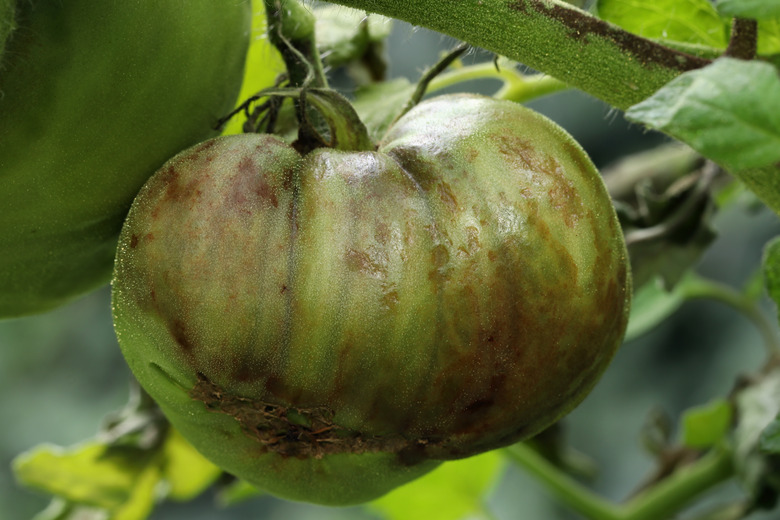My Plant Stems Are Turning Black
Leaves turning yellow or red in fall are just part of nature's cycle, and so are annual plants withering and dying back in winter. However, plant stems or trunks turning black is never, ever a good sign. It almost always indicates that the plant is being attacked by one type of fungus or bacteria, a condition called blight.
It's better to learn something about this issue before you have to face it head on. It is easier to take steps to avoid it than it is to cure it.
Understand What Blight Involves
"Blight" is a general term used to identify plant dieback and canker issues caused by fungal or bacterial infections. Species of the fungal order Botryosphaeriales are often the ones that cause blight. While some of these are familiar, others are not known or even named.
With the wide diversity of species in Botryosphaeria and blight bacteria, many if not most woody plants are vulnerable to infection. Some species only attack one or two specific plants, but others are not so picky and can infect a wide array of trees and shrubs.
This is also true of bacteria. The bacterium Pseudomonas syringae pv. syringae, for example, causes damage to all types of lilacs, including Japanese, Chinese, Persian, and common varieties, as well as forsythia and blueberries. Some types of blight can also strike tomatoes and other garden vegetables.
Recognize Symptoms of Blight
Wilting foliage, branch dieback, and darkening stems are usually the first symptoms of blight a gardener is likely to notice. The plant may otherwise look just fine, but if you strip back bark, you'll find brown or black stems. Often, the first signs of blight are just above the soil line but later can appear along branch crotches. For some shrubs, the leaves may wilt and even fall to the ground before the stem tissue turns black.
Look for blight infections in springtime during wet weather. Persistent wet weather makes it easier for fungal spores or bacteria to spread, as rainwater and wind facilitate this. They can also be spread by insects moving from one plant to another and also through contaminated garden tools.
Note that the fungi as well as bacteria can overwinter in branches or stems of the plants themselves or in garden detritus on the ground. They can also enter the soil, where they can survive for years.
Prevent and Deal With Blight
While it is impossible to keep fungi and bacteria out of the garden, you can take steps toward protecting your plants. The first thing to keep in mind is that many types of blight are opportunistic pathogens and only attack stressed plants. Making sure your plants have their needs met is a good first step toward keeping away blight.
Be sure to water your plants during periods of drought. Drought stress is one of the main reasons plants become vulnerable to blight, but it's not the only one. Don't prune trees and shrubs too much and never prune recently transplanted trees and shrubs. If the soil is poor, fertilize appropriately and strengthen the soil with organic mulch that will compost its way into the soil over time. Cleaning up the garden is also important, and sanitizing tools in springtime is a must.
When blight strikes, remove infected plants, including fallen leaves and roots, and destroy them. The soil around the plant roots should also be removed. That's the only way to limit transmission to other plants. Sanitize tools before and after using them.
